Is there a pink Monstera or pink variegated Monstera? The answer is no. What most people call pink Monstera is the Pink Princess Philodendron.
It is just mislabeling, and it’s not just to this plant but a lot more others. For instance, Monstera deliciosa is a ‘split-leaf Philodendron’ yet is not a philodendron. Also, Mini Monstera or Monstera Ginny is a Rhaphidophora tetrasperma.
We will be talking about the Pink Princess Philodendron since there is no pink Monstera variety. While they bear a resemblance, Monsteras are not philodendrons. You can tell the difference if you keenly observe them. See more on Monstera vs. Philodendron.
As we look at this lovely houseplant, we will give you care needs (light, temperature, humidity), watering, pruning, and fertilizing. Also, we will talk about propagation and much more. Being a nickname, we may still call the plant Pink variegated Monstera
Warning
Pink Princess Philodendron is toxic to humans, cats, dogs, and other pets. Why? It has sharp insoluble calcium oxalates. If chewed, it will cause severe oral irritation or a burning sensation, swelling, redness, swallowing difficulties, drooling, and so on. Also, it can cause skin irritation.
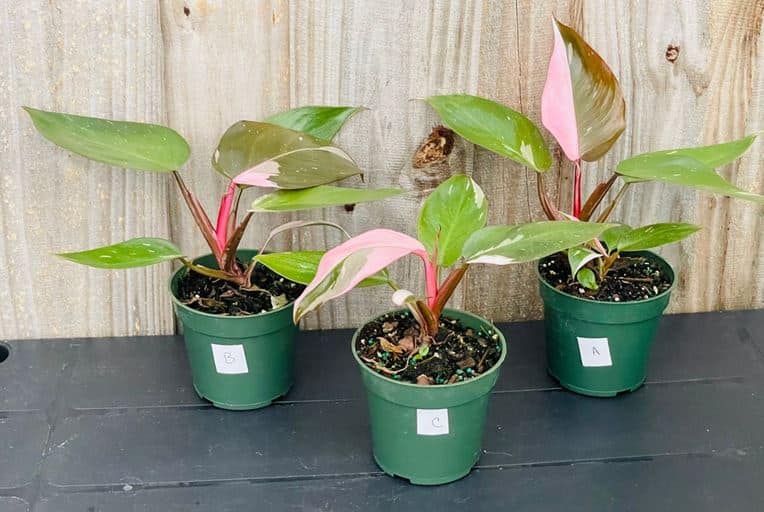
Contents
- About Pink Princess Philodendron
- Pink Princess Philodendron care and growth requirements
- 1. USDA hardiness zone
- 2. Temperature
- 3. Humidity
- 4. Light
- 5. Soil
- 6. Watering
- 7. Fertilizer
- 8. Pruning
- 9. Potting and repotting
- 10. Support
- Pink Princess Philodendron propagation
- 1. Water propagation
- 2. Soil propagation
- Buying the pink variegated Monstera
- Problems, diseases, and conditions
- Frequently asked question
About Pink Princess Philodendron
Pink Princess Philodendron, scientifically known as Philodendron erubescens Pink Princess, is a rare variegated form of philodendron erubescens (Blushing Philodendron or Red-Leaf Philodendron) that everyone seems to love.
P. erubescens Pink Princess is an upright vining plant that can grow up to 4 feet tall and spread about 2 feet wide. It has large lovely heart-shaped dark green large leaves (9 inches long and 5 inches wide) with pink variegation.
You will find small streaks, splotches, speckles with some half-moon or the whole leaf pink. Also, the variegations may be whitish or yellowish. Like P. erubescens, it has deep red petioles and stems. Also, it has aerial roots.
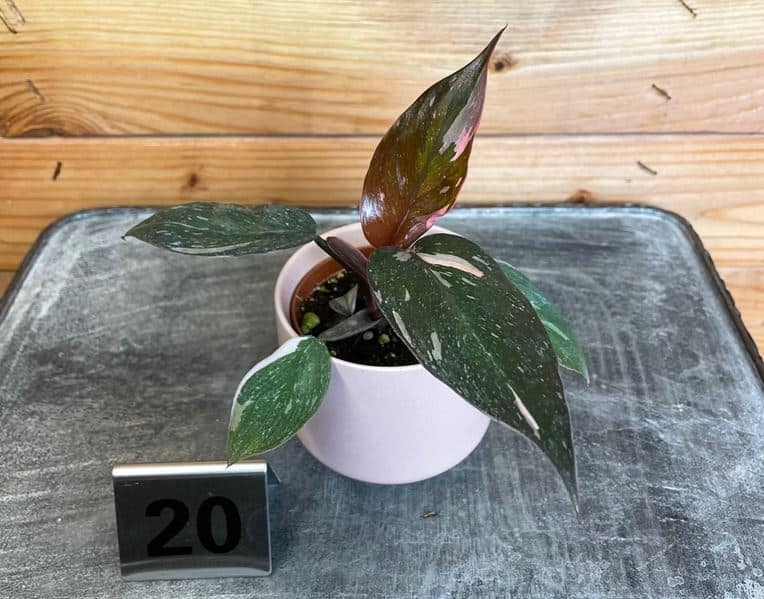
Last but not least, there is also the Philodendron Burgundy Princess (Philodendron erubescens 'Burgundy Princess'). It is a bolder variation of the Pink Princess that has pink flecks on leaves and pink streaks on stems. The leaves are more burgundy than greenish.
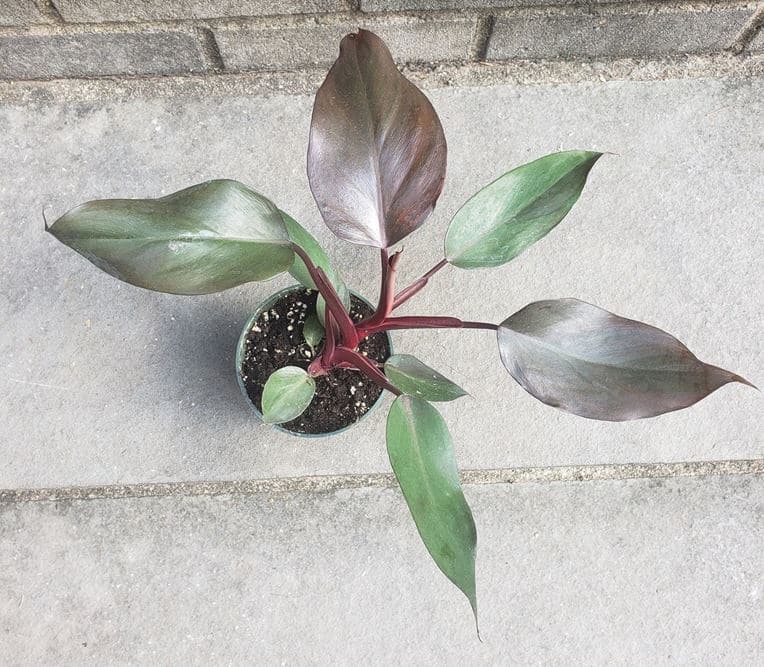
Pink Princess Philodendron care and growth requirements
The Philodendron Pink Princess is easy to care for plant. Grow it in a warm, humid area with bright indirect light, fertilizer it moderately, and let the water dry in between watering. Repot after 1 to 2 years, prune it and give it a place to climb.
Here are the pink Monstera care details:
1. USDA hardiness zone
This variegated Blushing Philodendron’s USDA hardiness zone is 10B to 11. Freezing temperatures and frost will damage it. Grow it outdoors if you are in these zones. You can grow it outdoor all year if you are in these zones
2. Temperature
The ideal growing temperature is 65 to 85 degrees Fahrenheit (18 to 29°C). It can tolerate slightly lower temperatures. But keep them above 55 °F (12.8°C).
Avoid sudden temperature changes, cold drafts, an area close to your AC vents, heating systems, or anything that emits heat or coldness.
3. Humidity
Pink Princess Philodendron requires average to above average humidity, i.e., 50% or more.
If your home has low humidity, mist it a few times a week or use a pebble tray. You can also put plants together or take them to your bathroom, kitchen, or other rooms with low humidity.
We use Pure Enrichment® MistAire humidifier, which runs for 25 hours. It is quiet and will serve medium-sized rooms. Also, it has other features like auto-shut, 360-degree rotating nozzle, etc. Many people have highly rated it in various marketplaces.
4. Light
Your Pink Princess requires bright, indirect light but can tolerate a bit of early morning sun. Too little light will slow growth, and too much will beach leaves or cause a sunburn, characterized by dry brown edges and tips.
For low light, buy a grow light. A brand like GE Grow Light LED Flood Light Bulb. It is affordable, efficient and lasts for up to 25,000 hours.
5. Soil
The best soil for Pink Princess Philodendron should be chunky, well-drained, and high in organic matter. It should be slightly acidic to neutral, and a pH of 5.6-7.5 are ok.
Go for an aroid mix (see Etsy.com) or make your own. For instance, an equal mixture of sphagnum moss and perlite should work. But you can add some bark chips, charcoal, and worm castings.
6. Watering
They are sensitive to overwatering as it will cause root rot. So, let the potting mix slightly dry in-between watering. We recommend watering your Pink Princess when the top 50 to 75% or a few inches of the soil feels dry.
It may be once a week in spring or summer and bi-weekly in winter. But this depends on your conditions (temperature, humidity, light), plant size, pot size, type, etc.
So, always test the soil either with your finger or using a soil moisture meter like XLUX by IAGTEK. Water when the the soil is dry up to the first knuckle of your finger or your soil moisture sensor reads 3 or less (in the dry zone).
To water, slowly and evenly saturate the soil until excess water flows from drainage holes. Then discard the water that collects on the pot saucer after 15 minutes.
7. Fertilizer
These plants are medium feeders. So feed your Philodendron erubescens pink princess once a month in spring and summer using an all-purpose houseplant fertilizer. Don’t fertilize in the non-growing seasons. And for a newly potted or bought plant, wait for about four weeks.
We add four pumps of Miracle-Gro Indoor Plant Food (Liquid) into a quart of water and use it to water the plant biweekly.
8. Pruning
Pruning will involve cutting any diseased, dead, brown, yellow, or damaged leaves with sterilized pruning shears. And in spring or summer, you can trim a few branches (less than 30%) to control shape and growth. Always cut branches and stems above the node, like a ¼ to ½ an inch.
9. Potting and repotting
Pink Princess Philodendron requires repotting yearly when young and rapidly growing. Afterward, you can repot it every two years or when rootbound (roots grow from drainage holes).
Repot in spring or summer, use a pot 2 to 3 inches wider than the current one and ensure it is deep enough to accommodate roots and give room for growth.
10. Support
As a climber, we recommend having a stake (burlap-wrapped, cedar, moss pole, or a trellis) and training your plant. Use twist ties or a string to mount your plant to its climbing pole.
Pink Princess Philodendron propagation
Pink Princess Philodendron propagation is by stem cutting either in water or soil (potting mix or other growth media). Seeds will not produce a variegated plant.
The stem cutting must have at least a node. You cannot propagate pink Monstera without a node. Please note that aerial roots, a stem without a node, or leaves won’t propagate a new plant. But you can use a stem node without a leaf.
The best time to propagate your plant is in early spring, but you can do it in summer.
We will look at soil propagation and comment on water propagation. These two methods are just the same, the difference being the media you use and a few other things.
1. Water propagation
What you need
- Gardening shear
- Use a well-draining potting mix or equal perlite and peat moss mixture. You can even use sphagnum moss alone, but you will have to soak and wring it, not water it.
- Rooting hormone like Garden Safe Brand TakeRoot Rooting Hormone.
- Sealable transparent plastic bag
- Nursery pots
- 70 to 90% rubbing alcohol for sterilization
Steps to follow
- Put the potting mix in your nursery pot and water it thoroughly until excess water flows from drainage holes. Wait for 15 minutes and discard any water that collects in the cachepot or saucer.
- Select a healthy plant with at least a node and use your sharp and sterilized gardening shear to cut it just below the node. We usually go for a plant with at least two nodes.
- If it has more than two leaves, remove the lower ones. Your plant needs to focus its energy on rooting and growing a new shoot.
- Apply your rooting hormone on the cut end. It will promote faster rooting and prevent rot.
- Poke a hole on your potting mix, and plant your pink Monstera cutting. Ensure the soil covers the node and lightly tamp the potting mix around it to ensure it remains upright.
- Cover the cutting with your transparent plastic bag leaving a small breathing opening. It helps lock moisture but don/t let it touch the leaves.
- Please place it in a warm area with bright, indirect light.
- After every few days, remove the plastic bag to let the plant breathe. Also, mist the soil to ensure it remains moist.
By the end of the 4th or 5th week, your plant will have rooted, put on new growth, and be ready for transplant. But the exact duration depends on your conditions. It can take longer.
2. Soil propagation
In Pink Princess Philodendron propagation, you will dip the stem cutting into a water jar after applying your rooting hormone. Then, please place it in a warm area with bright, indirect light.
Change water every 3 to 4 days or if the level goes down. Your plant will be rooted and ready for transplant after a few weeks (4 to 6 weeks).
Buying the pink variegated Monstera
When buying Pink Princess Philodendron, avoid all pink plants as they will not photosynthesis effectively. Instead, pick balanced plants.
Next, check shipping conditions if you live in cold areas, ensure you see the actual picture, and don’t buy Pink Congo.
Last but not least, don’t forget to get it from a trusted vendor with many positive reviews.
Problems, diseases, and conditions
| Pests | Pests are not a significant problem if grown indoors. But your plant may have aphids, scale, mealybugs, or spider mites. Use insecticidal soaps, horticultural oil, or neem oil. Also, hose the plant in minor cases. |
| Root rot | Root rot is a widespread problem to overwatered Pink Princess Philodendron. Signs include leaf discoloration (turning yellow or brown), dropping, wilting, stunted growth, mushy stem base, mushy black or brown roots, etc. Repot, use a fungicide. Diluted hydrogen peroxide may help minor cases. |
| Other diseases | Common diseases are fungal and bacterial leaf spots, rusts or blights, and dasheen mosaic viruses. Practice proper sanitation (wash hands and disinfect tools), inspect new plants and isolate infected ones. Discard any plants with bacterial or viral diseases. For fungal disease, cut infected parts and use a fungicide. |
| Overwatered | The soil will be soggy even after not watering for a few days, and leaves will turn yellow, starting with lower ones. Your plant may drop or wilt, but watering will not fix the issue. You may notice brown or black splotches, moldy potting mix, leaves dropping, mushy stem base, and moisture-loving pests like fungus gnats. |
| Underwatered | When thirsty, these plants will curl leaves, droop or wilt but improve with watering. Also, they grow slowly, and leaves will turn yellow, have crispy brown edges and tips, etc. |
| Leaves turning yellow | Yellow leaves mean your plant cannot make chlorophyll (the green pigment), or growth conditions cause degradation. Overwatering is the most common cause and starts with lower leaves, followed by too little light. But it may be other causes like low humidity, underwatering, overfeeding, nutritional deficiencies, pests, disease, etc. |
| Leaves curling | It will curl leaves to prevent moisture loss or protect itself from adverse conditions. The common reason is underwatering. But low humidity, too much light, heat stress, cold drafts, rootbound, transplant shock, etc., are all possible causes. |
| Drooping and wilting | It indicates that plant cells don’t have enough water to help keep cells turgid. The primary cause is underwatering. So, any other factor that causes more water loss than roots can absorb or prevent intake is a cause. They include low humidity, heat stress, overfeeding, transplant shock, too much light, rootbound, overwatering, etc. |
| Brown leaves, spots, tips, or edges | Brown spots are a sign of diseases and pests. If you see patches or splotches, it could be overwatering or too much light. Brown tips and edges are a sign of leaf scorch. It can happen due to underwatering, low humidity, too much fertilizer, transplant shock after repotting, rootbound, too much light or heat, etc. |
Frequently asked question
The Pink Princess price is between $30 to $90 with most people selling their plants $60 to $80. But unrooted cuttings may cause much less, below $30 and established plants may go well over $100.
The best place to buy Pink Princess Philodendron is Etsy.com and eBay.com. Here people not just from the USA but also Canada, Australia, the UK and other parts of the world can buy plants. Other places are Logees.com, Walmart, Instagram, Facebook plant groups, etc. It's not rare or hard to find.
The answer is no. Healthy seeds will germinate but won’t give rise to a variegated Pink Princess plant. Instead, you will get the usual Philodendron erubescens. Why? Because the variegation results from an unstable, genetic mutation that is not inherited, i.e., seeds cannot carry it.

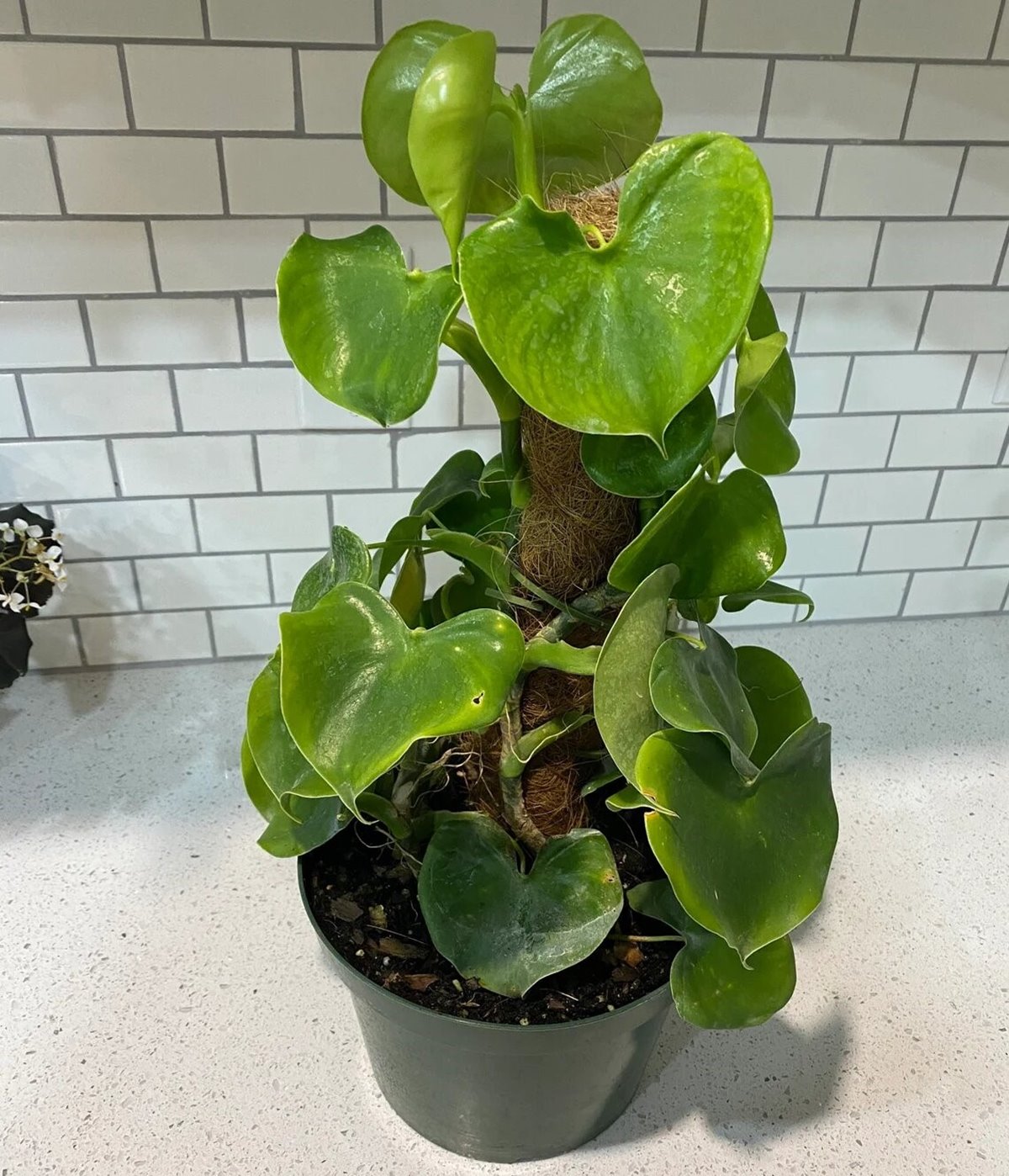
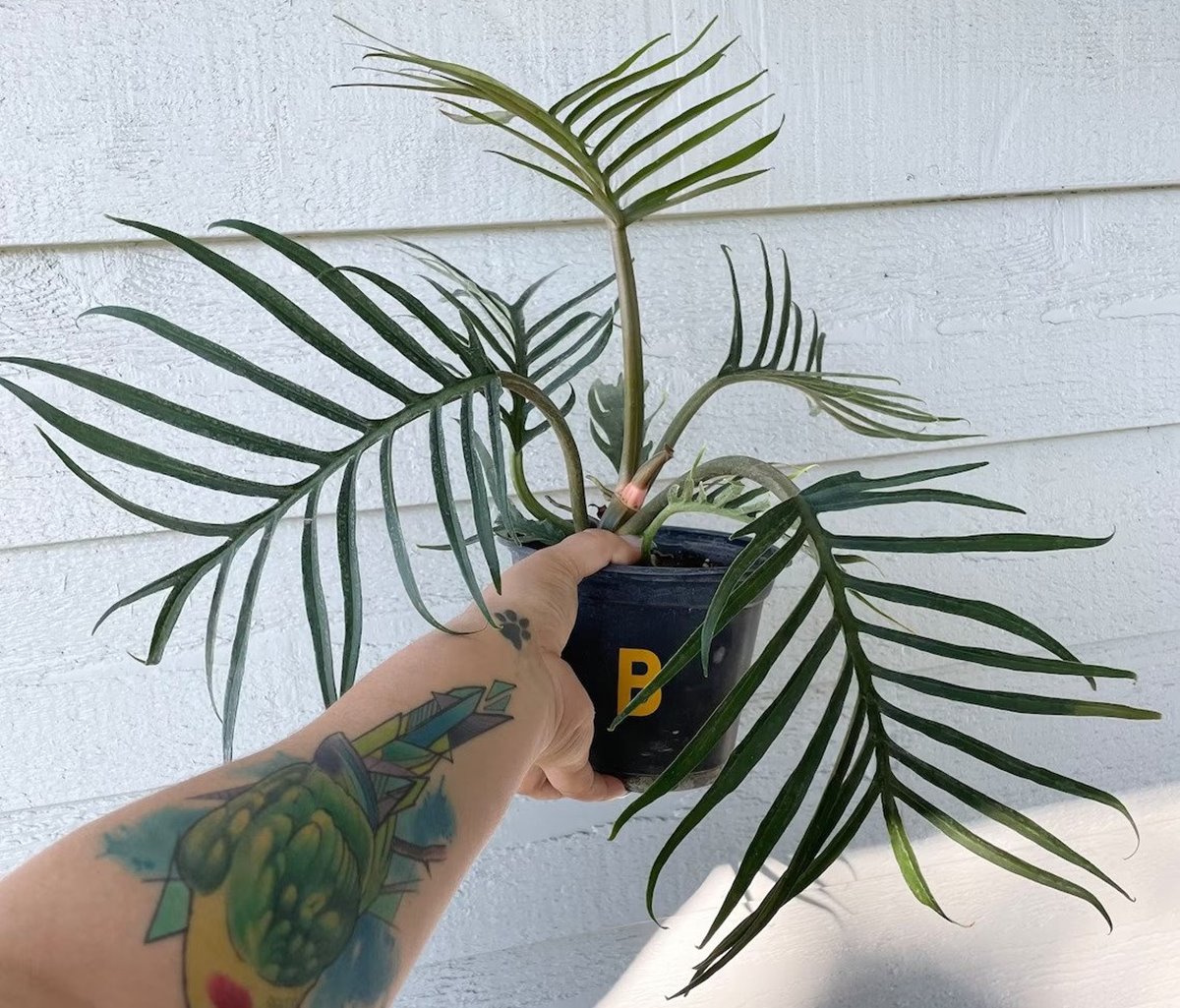
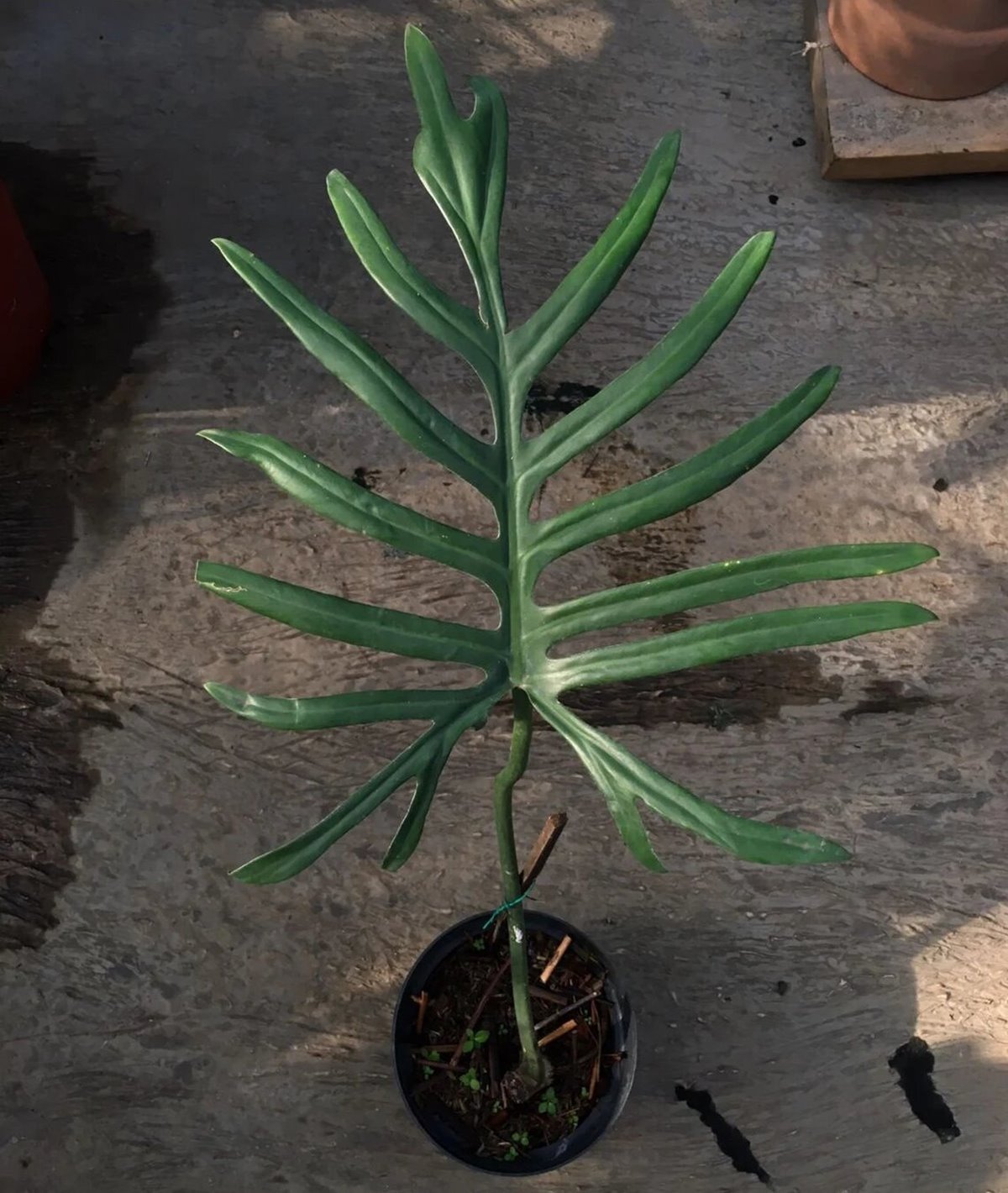

Leave a Reply